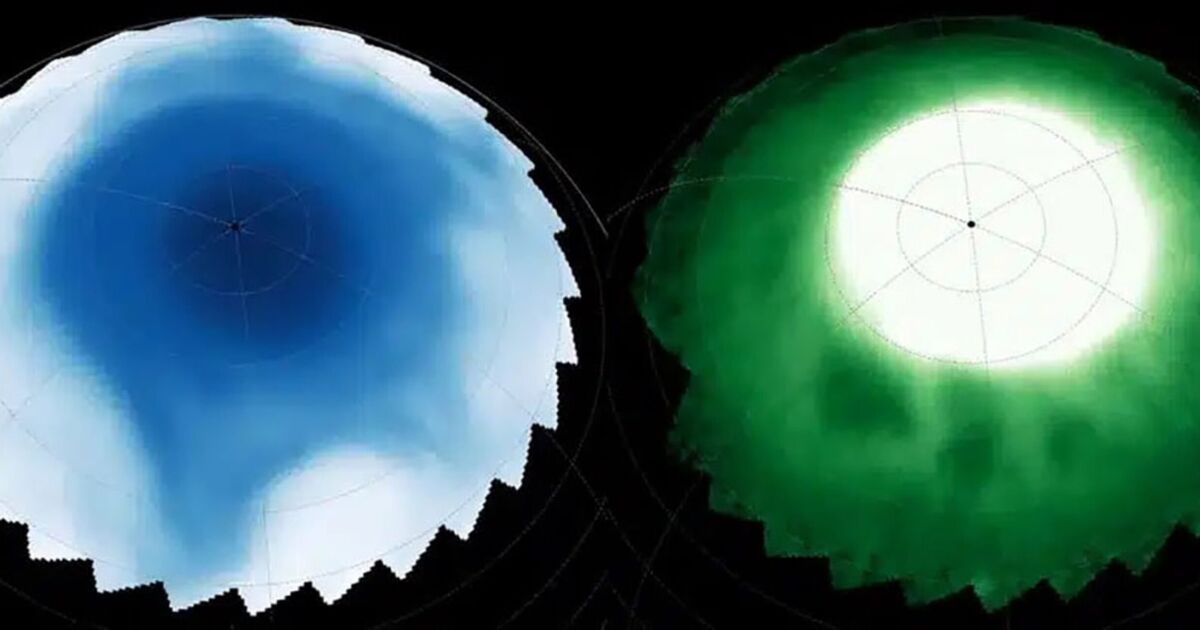The majority of space remains a vast mystery to scientists, and it continues to be a constant source of new discoveries. However, NASA’s latest findings have stumped scientists, as the James Webb telescope has uncovered strange and never-before-seen structures in Saturn’s atmosphere.
The new revelations challenge what scientists thought they knew about giant planets.
Using the James Webb Space Telescope (JWST), NASA has discovered two previously unobserved phenomena in Saturn’s atmosphere, and so far, they can not explain what they are.
Published in Geophysical Research Letters, the new peer-reviewed study notes a pair of atmospheric anomalies that includes a string of dark structures, not seen before on any planet in our Solar System.
The structures were found drifting in Saturn’s ionosphere, with an asymmetric star-shaped pattern in the stratosphere directly below. Both features defy previous scientific predictions.
The findings were observed in an area known as Saturn’s sub-auroral ionosphere, a region roughly 1,100 kilometers above the planet’s clouds. The scientists discovered a chain of dark infrared-absorbing structures between 55° and 65° north latitude, which they are now calling “dark beads”.
The unusual structures were also said to have faint halos of brighter emission and were only present on one side of the planet.
“These dark beads are most likely the result of thermospheric dynamics driven by ionospheric winds,” the study explained.
“No known ionospheric planetary analog exists” with the specific features the structures were displaying, the authors write.
This wasn’t the only anomaly the researchers found, however. In the upper stratosphere, at an altitude of approximately 600 kilometers, they discovered a six-armed, star-shaped structure that was dark against the surrounding brightness. They noted that two of the six arms were missing from the shape, leaving a strange, asymmetric figure. It is said to be unlike anything previously recorded on Saturn or anywhere else.
“The upper stratosphere appears to have an atmospheric formation unlike anything previously known,” said the paper, and that this misshapen star is “again unlike anything previously observed at other planets.”
The two discoveries were made with NASA’s James Webb Space Telescope, which is also being used to track the interstellar comet 3I/ATLAS, a subject that remains largely mysterious to scientists.
Renowned Harvard astrophysicist Avi Loeb recently published a new blog post claiming the interstellar comet 3I/ATLAS is significantly larger than previous visitors. He added that the enormous size and unusual characteristics of 3I/ATLAS are so unlikely for a natural object that it could potentially be an alien spacecraft.
“The inferred mass of over 50 billion tons is at least a million times more than the inferred mass of 1I/Oumuamua,” he wrote.
He continued: “Why were we so fortunate to receive such a giant object as the third in the list of interstellar objects before witnessing a million objects of the size of 1I/Oumuamua?
“As I showed in my paper, there is not enough rocky material in interstellar space to accommodate the delivery of such a giant icy rock to the inner solar system over our survey period of a decade.”
Loeb cautioned, “we’re screwed” if this object originates from a civilization with superior technological capabilities, and emphasized that global agencies need to stay vigilant and consider strategies should the comet prove to have an artificial origin.

